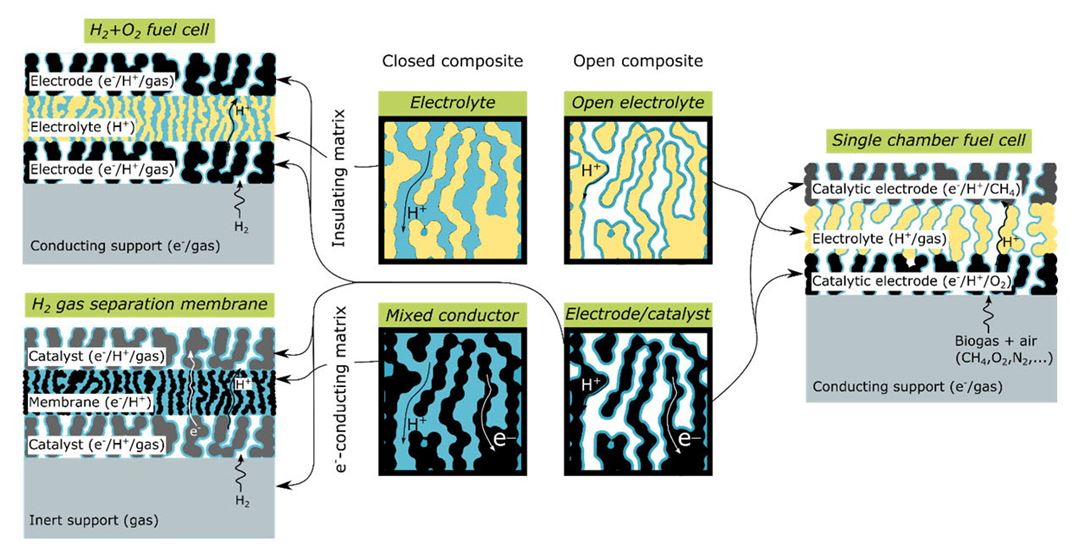In the transition to a low-emission society based on renewable energy, new knowledge and innovative solutions are required that promote long-term development of the energy system. This development involves more use of renewable energy resources (wind, solar and hydropower), more energy efficient solutions and increased need for flexibility. Two important devices in the energy system will be fuel cells and electrolysers. In a fuel cell, hydrogen gas is converted into electricity, while in an electrolyser the opposite occurs - electricity is used to produce hydrogen gas from water.
In the research project SUPROX we are investigating a new type of materials for such fuel cells and electrolysers. These new materials are porous ceramic materials that have a thin layer of water on the surface. Fuel cells and electrolysers depend on protons, which are positively charged hydrogen atom cores, being transported through a membrane. In the porous ceramic materials, the transport of protons will occur in the water layer on the surface. The fuel cells used most today, for example in hydrogen cars, are based on polymeric materials that do not withstand elevated temperatures and contain a lot of expensive platinum. The new materials we will develop in SUPROX can potentially make the fuel cells and electrolysers more efficient, more durable and cheaper so that they can be used to a greater extent than today. The project will thus contribute in the transition to the low-emission society.
SUPROX is a collaboration between SINTEF and the University of Oslo (ELCHEM research section) and is funded by the Research Council of Norway's ENERGIX program (280868).


